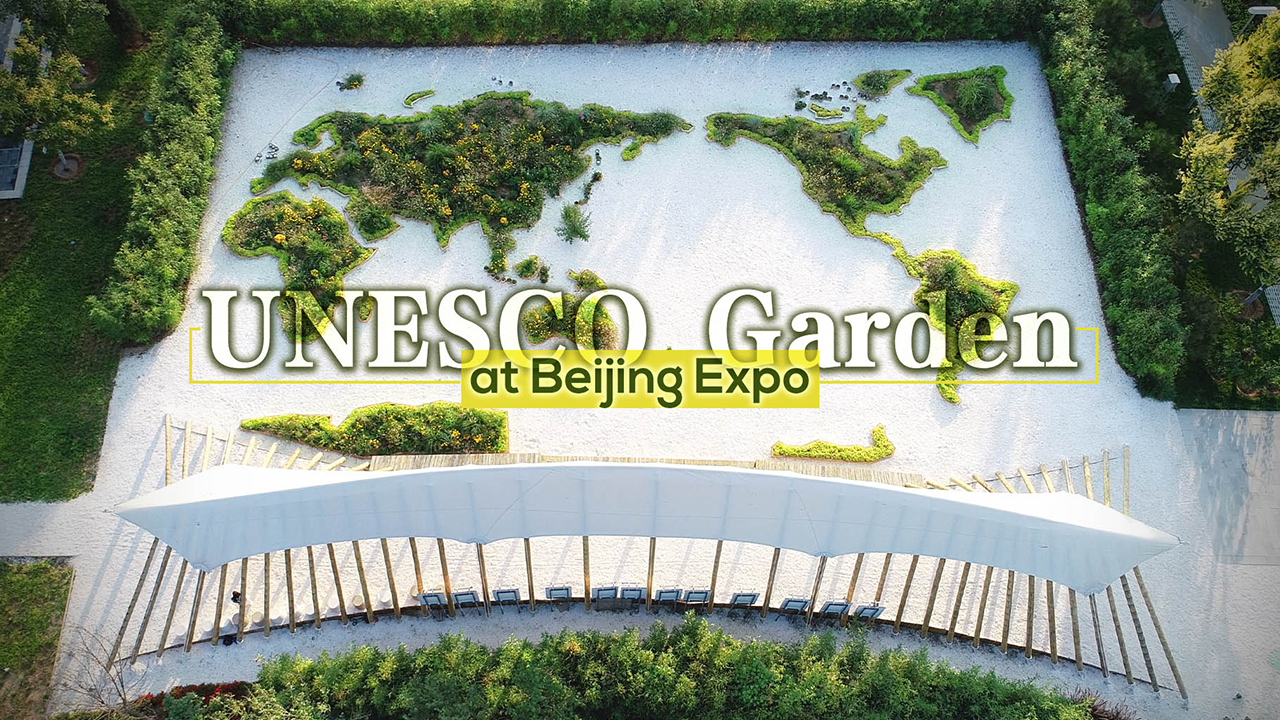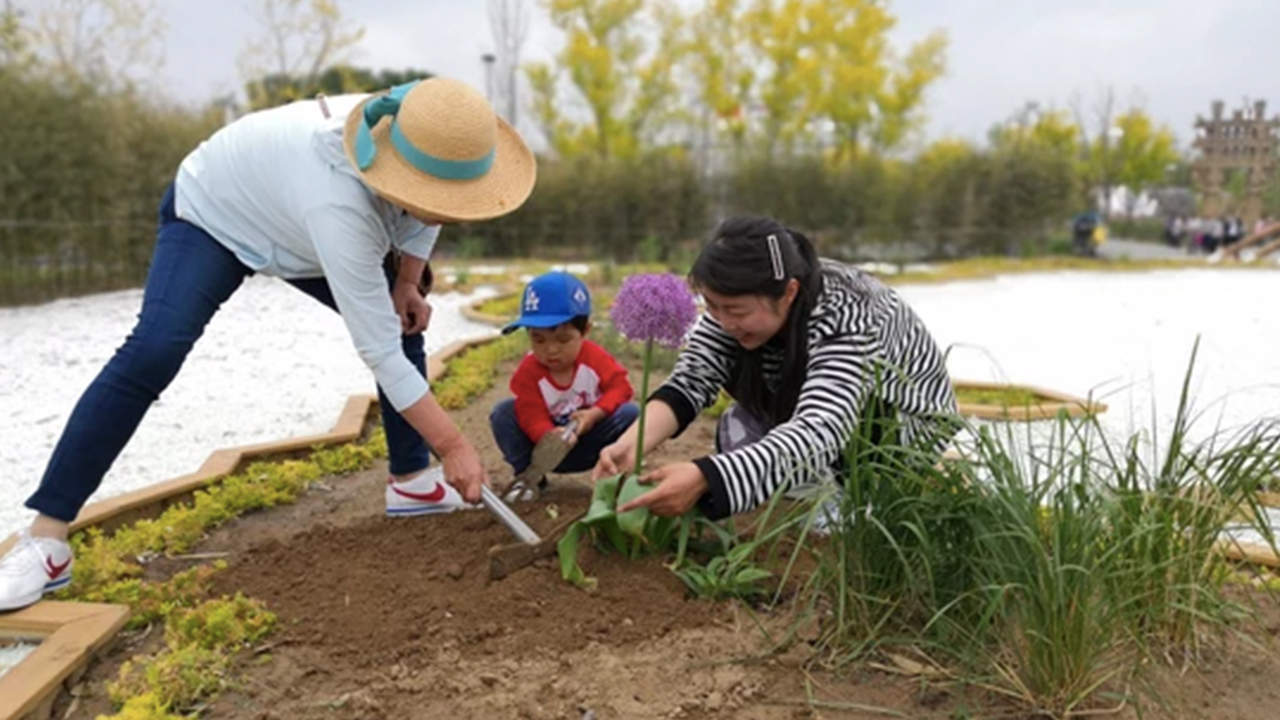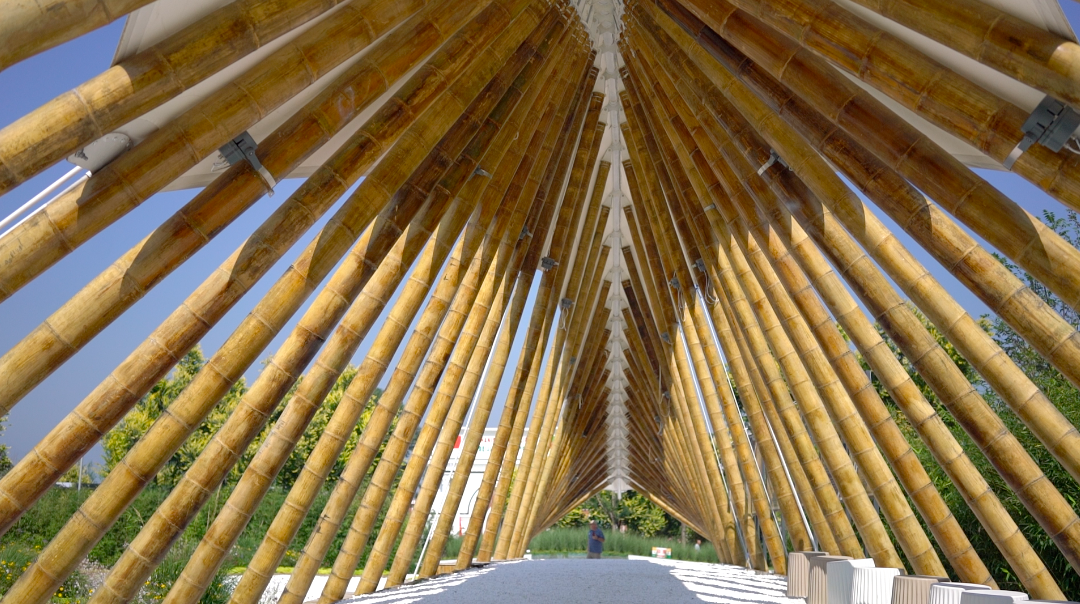01:51

"It's not easy to see from the ground. But this garden has a very particular shape – we have reproduced the world map." Philippe Pypaert, Program Specialist for Natural Science of UNESCO Beijing Office, told CGTN at the 2019 International Horticultural Exhibition.
Behind him was the UNESCO Garden, where flowers were blooming and visitors were taking pictures with the flourishing plants.
But when the garden first opened in April, it was "empty." The open space was only decorated with scattered vegetation, stones and other natural objects to outline the seven continents and four oceans of the world. The idea was to invite visitors to plant their own flower or plant, making their contribution to the final design of the garden – a green "world map."

Visitors plant flowers at the UNESCO Garden. /UNESCO Photo
Visitors plant flowers at the UNESCO Garden. /UNESCO Photo
Every afternoon, a drone flies over the garden, taking pictures of its changes. These photos will be put online for people to observe the formation of the garden. Through this interactive, co-creation experience, UNESCO hopes to convey a "message" to the public.
"We all care about the planet and we all have to do something to make it greener, to make it more sustainable. Therefore, we need the active participation of everyone," said Pypaert, who's leading the project.
In the garden, a gallery built with bamboo is also popular among visitors. The bamboos, from southwest China's Yunnan Province, are 30 meters tall. Known for its structural and eco-friendly qualities, the bamboo not only supports the white roof that provides shadows for visitors, but also presents an example of harmonious co-existence of man and nature.

Gallery built with bamboo at the UNESCO Garden. /CGTN Photo
Gallery built with bamboo at the UNESCO Garden. /CGTN Photo
Posters telling stories of UNESCO's projects and initiatives are exhibited in the gallery. People walking through the pavilion can learn about the organization's programs on promoting sustainable development and protecting biodiversity, including World Natural and Cultural Heritage Sites, Biosphere Reserves and UNESCO World Geoparks.
Pypaert considered the garden as a platform for exchange and emphasized the importance of engaging everyone in shaping a better world for future generations.
"You communicate and you educate showing good examples. People then will be moved to act by themselves, to change something in what they do, in the way they live, the project they develop in their lives."
Filmed by Zhao Yuxiang
Video editor: Xu Xiaotong
Cover image: Yin Yating